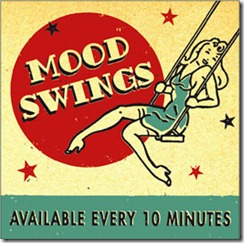Fiction-Zone: Leaps in Fiction Mastery by Diane Holmes
Stuff That Matters
My Mom is a skimmer.
When she reads (and she has 70 years of reading experience), she’s seen it all, read it all, and re-read it if it’s any good.
So, when I hear her give an exasperated sigh and start flipping pages, I know what’s happening. She’s skimming. (She also reads the ending first, which I try not to hold against her. But it’s hard….)
It would be a mistake to think the writing isn’t any good. She’s not responding to the beauty of the sentences, the “goodness” of the prose. What she’s saying with her sigh is that, “What I’m reading doesn’t even matter!” And by matter, she means “to me or the character!”
This is a clear demonstration of pacing failure, because good pacing is about stuff that matters to the reader and especially to the characters. What you want is to write story in every scene that simply can’t be skimmed.
The Reader’s Digest Pacing Test
My mom introduced me to Reader’s Digest Book when I was very young, and I was an avid reader by 5th grade.
Reader’s Digest used to select bestsellers and books of note, cut a couple hundred pages (leaving “just the good stuff”) and publish several of them bound together into one gilt-edged Reader’s Digest edition. Ah, the nostalgia!
But this perfectly describes how my mother thinks all books should be edited. Just cut out the parts she has to skim anyway. The parts where her attention wanes and she feels rather put-out with the writer (no matter how well known!). The parts where the pacing sags.
If my mother ruled the publishing world, there would be a Reader’s Digest edit of every book ever published.
So here’s the test: Would Reader’s Digest cut out this page, scene, or section to create a digest version? You’ve just identified your pacing issues.
My mother’s here visiting me now. She just read a Jeffery Archer book for the second time, and I asked her, “So, did you want to condense it for Reader’s Digest?”
“No!” she said, surprising us both. “There’s nothing to cut out. It was all good.”
And those, dear writers, are beautiful words, don’t you think?
It’s all good.
The Good Parts
So let’s talk about how readers identify what NOT to skim and the Stuff That Matters.
Even if they don’t quite know why a story is working, to a reader (or my mom), Stuff that Matters has an element of..
- Threat,
- Consequence, &
- Emotion
Threat
There are many faces of Threat. Here are some:
- Change that is fraught with risk or exposure
- Interruption that overpowers or derails the character’s current goals and demands attention
- Any action or situation associated with worry that “this could turn out baaaad”
- Anticipation of an unwanted (and uncontrollable) behavior or situation
- Real or implied danger (emotional, physical, spiritual, or mental)
- Volatility, loss of equilibrium and status quo.
- The unknown, secrets, and lies.
- Vulnerability and the presence of innocence.
- A challenge to safety.
- Fear, panic, & worry in others.
- Knowledge of an unpleasant meaning inherent in an action or outcome.
- Conflict. All sizes and shapes.
But threat is not enough to create good pacing. Continue reading Shot Through the Heart: Threat + Consequences + Emotions = Pacing








